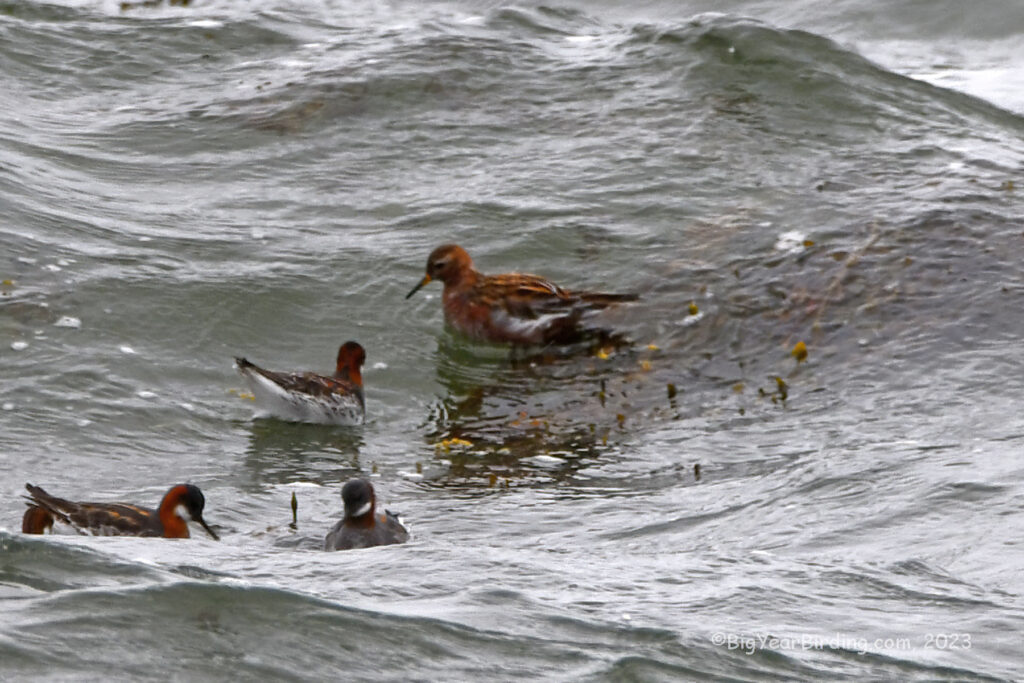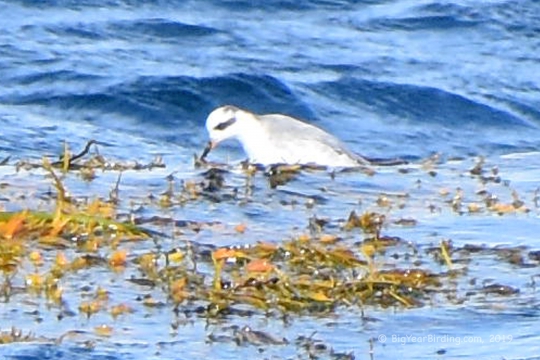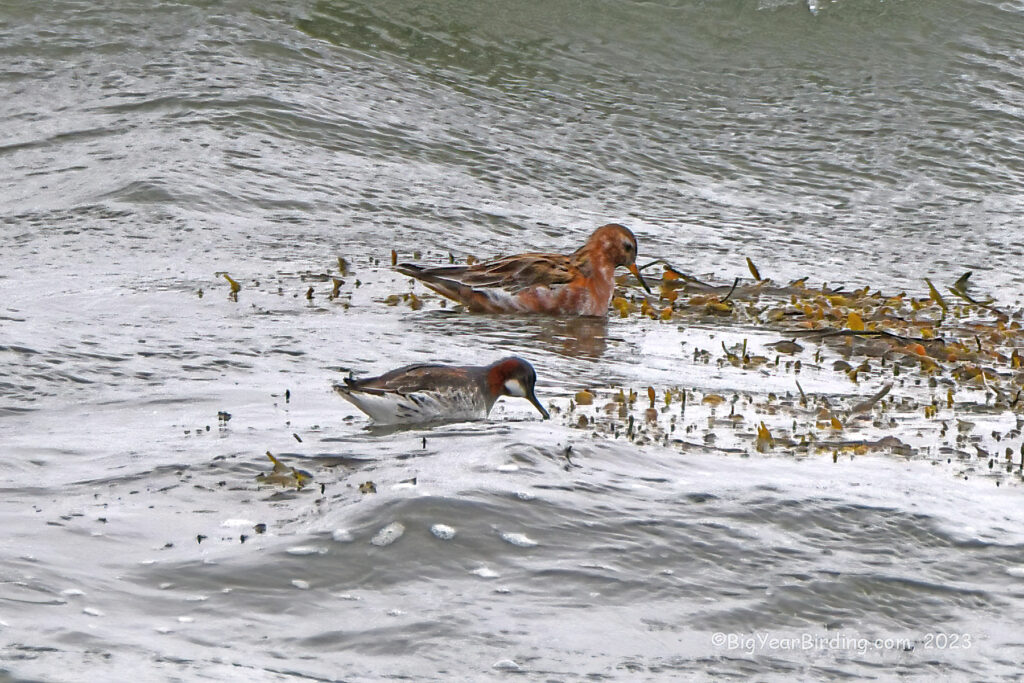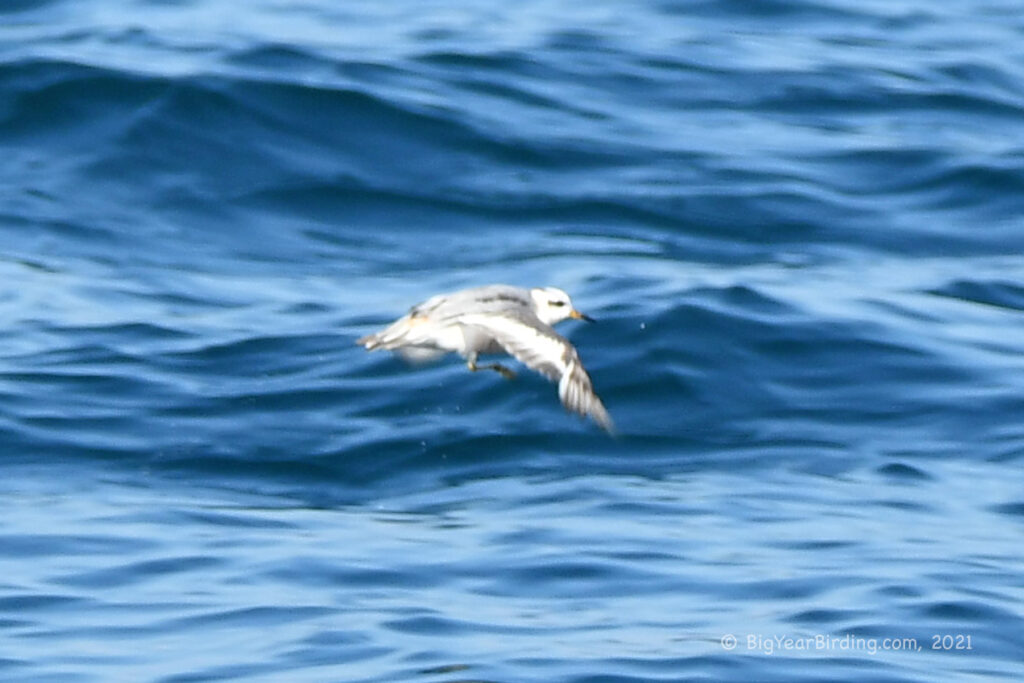
The Red Phalarope (Phalaropus fulicarius) is a small shorebird species that breeds in the Arctic tundra and migrates south to coastal waters during the non-breeding season. Adults typically measure between 7.9 and 9.1 inches in length and weigh between 1.8 and 3.5 ounces, making them one of the smallest members of the sandpiper family.

The Red Phalarope is easily distinguished from other shorebirds by its striking breeding plumage. During this time, males and females have similar bright reddish-brown feathers on their backs and sides, with black markings on their faces and throats. They also have a distinctive green patch on their necks. In non-breeding plumage, both sexes are primarily gray with white underparts.
Red Phalaropes are known for their unique feeding behavior, which involves spinning in circles on the water’s surface to create a vortex that draws in small prey such as crustaceans and plankton. This behavior is facilitated by their lobed toes, which are adapted for swimming and provide added surface area for propulsion.
During the non-breeding season, Red Phalaropes can be found in coastal waters throughout much of the world, including the Pacific, Atlantic, and Indian Oceans. They are also found in large numbers in the Gulf of Mexico. During the breeding season, Red Phalaropes can be found nesting in the Arctic tundra of North America and Eurasia.

Red-necked Phalarope (bottom)
Red Phalaropes undertake some of the longest migrations of any bird species, traveling up to 10,000 miles between their breeding and non-breeding grounds. They follow circular migratory routes, moving clockwise around the Arctic during the breeding season and counterclockwise during the non-breeding season.
Despite their impressive migratory abilities, Red Phalaropes face a number of threats, including habitat loss and degradation, oil spills, and climate change. Conservation efforts such as habitat protection and restoration, as well as measures to reduce carbon emissions and prevent oil spills, can help to ensure the long-term survival of this unique and fascinating species.

